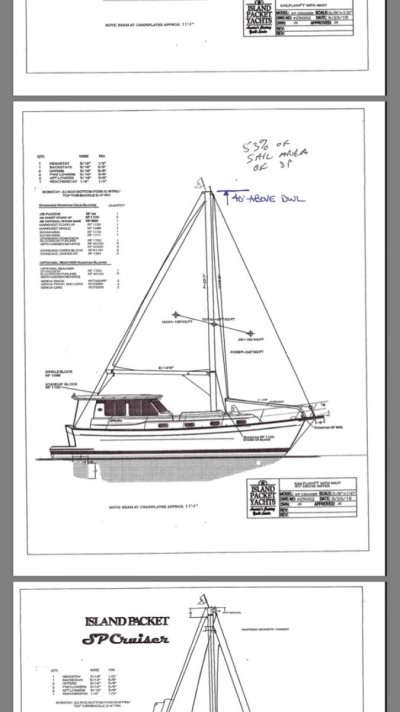klee wyck
Guru
- Joined
- Feb 8, 2014
- Messages
- 987
- Location
- USA
- Vessel Name
- Domino and Libra
- Vessel Make
- Malcom Tennant 20M and Noordzee Kotter 52
Trans,
I have got a hydraulic get home as you describe on Klee Wyck. As it came with the boat as OEM, I did not build it so have only a rudimentary working knowledge of it.
The pump itself is coupled to the non electrical end of a 15 kW Westerbeke genny so expect the motor is around thirty HP. Reservoir looks to be around 20 gallons with valves that are normally open to run a big thruster but can be switched to run the orbit motor that powers the get home function. The motor spins a cogged belt coupled to the main shaft.
This setup will give me about 2.5-3 knots in flat seas with moderate steerage all of which disappears rapidly as any weather becomes part of the picture. The boat weighs around 55K.
I will try to get a look at ID on the hydraulic pump and motor next time I am on her and try to remember to report back.
I have been thinking about this lately a bit as the generator is showing its age and a refit is probably in the cards. If it were only for the get home, I am not sure I would re-do the hydraulics in a generator refit, but, I do love the big thruster so the hydraulics are a must should that re-fit day come.
I have got a hydraulic get home as you describe on Klee Wyck. As it came with the boat as OEM, I did not build it so have only a rudimentary working knowledge of it.
The pump itself is coupled to the non electrical end of a 15 kW Westerbeke genny so expect the motor is around thirty HP. Reservoir looks to be around 20 gallons with valves that are normally open to run a big thruster but can be switched to run the orbit motor that powers the get home function. The motor spins a cogged belt coupled to the main shaft.
This setup will give me about 2.5-3 knots in flat seas with moderate steerage all of which disappears rapidly as any weather becomes part of the picture. The boat weighs around 55K.
I will try to get a look at ID on the hydraulic pump and motor next time I am on her and try to remember to report back.
I have been thinking about this lately a bit as the generator is showing its age and a refit is probably in the cards. If it were only for the get home, I am not sure I would re-do the hydraulics in a generator refit, but, I do love the big thruster so the hydraulics are a must should that re-fit day come.

